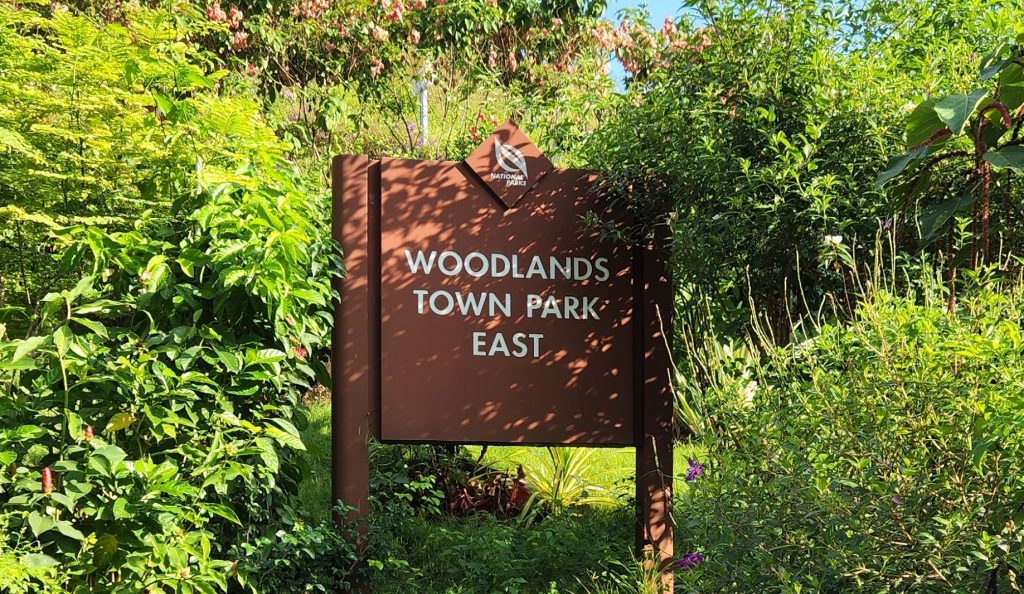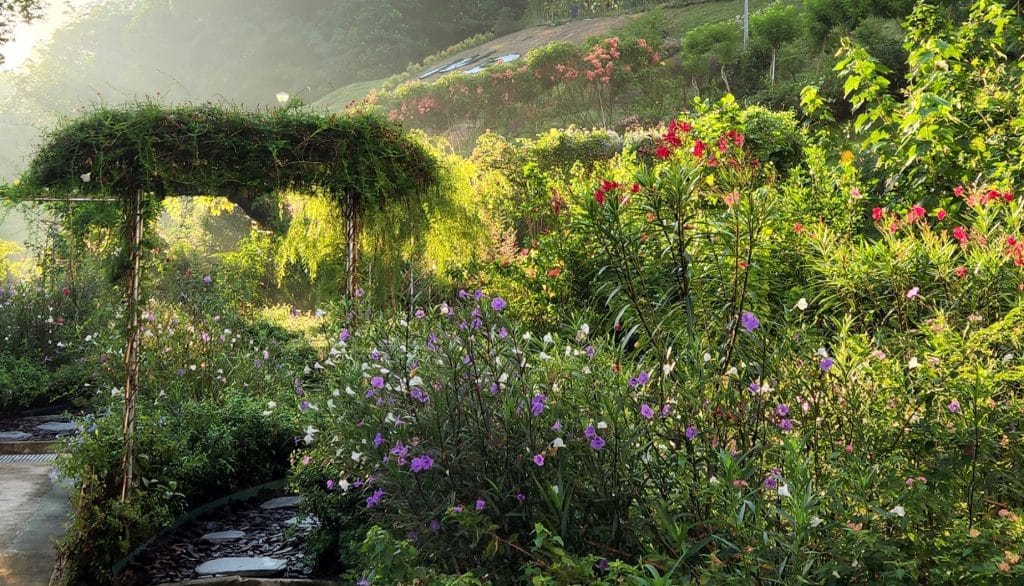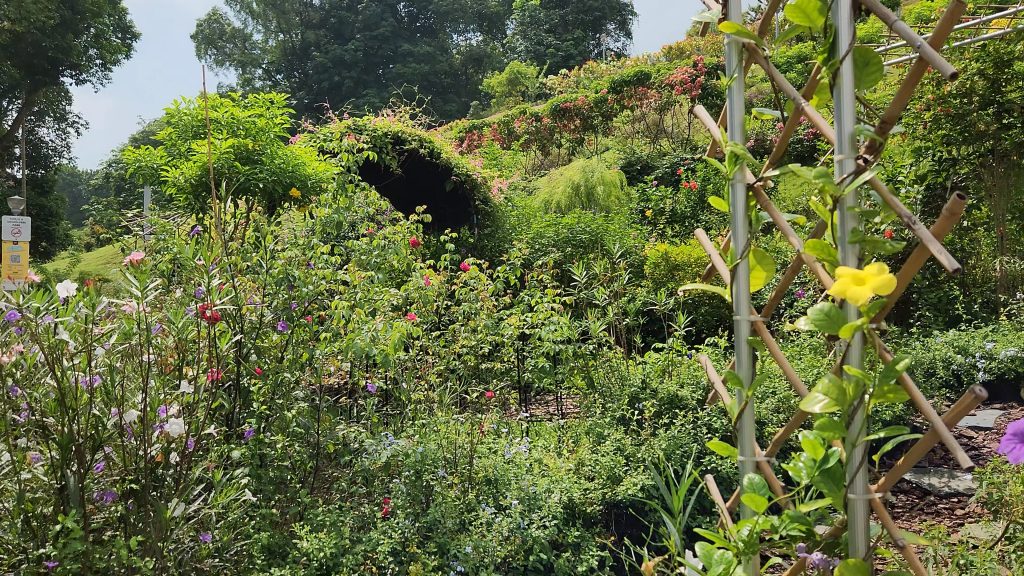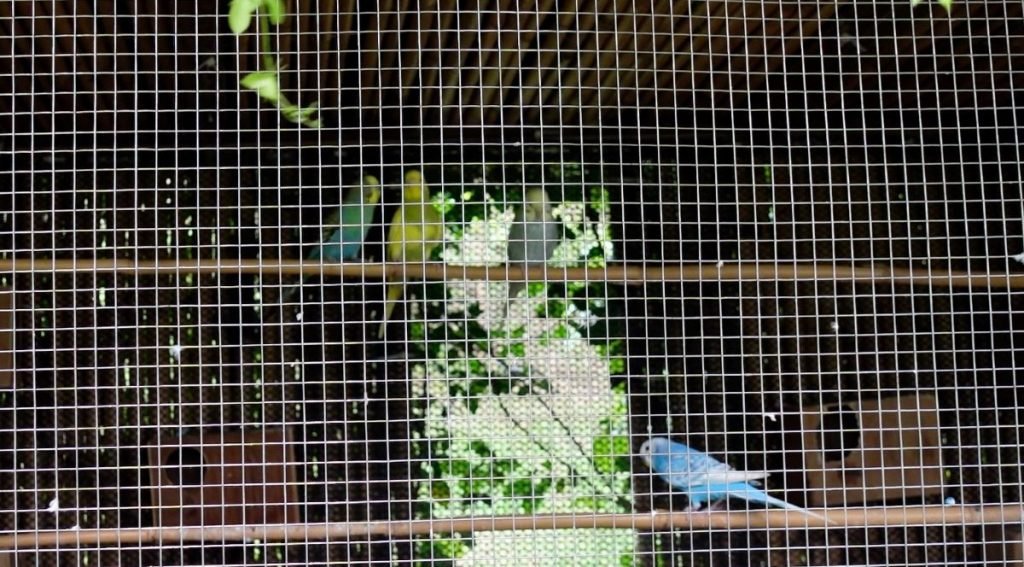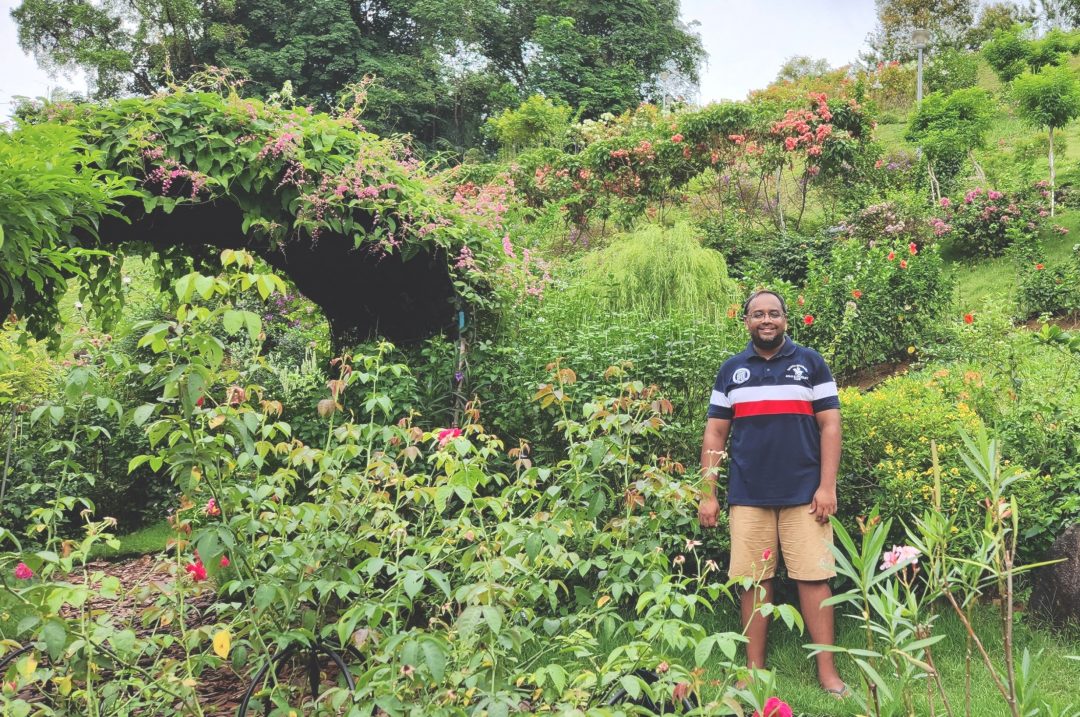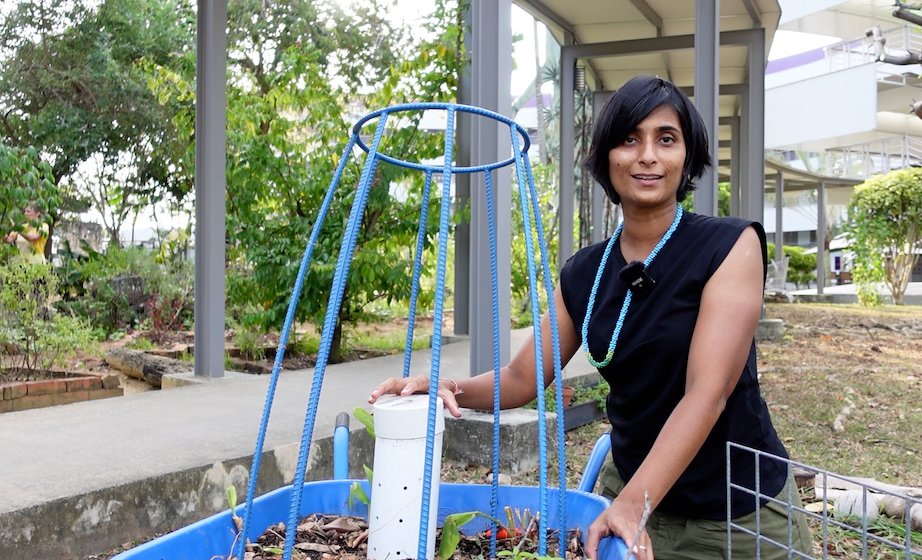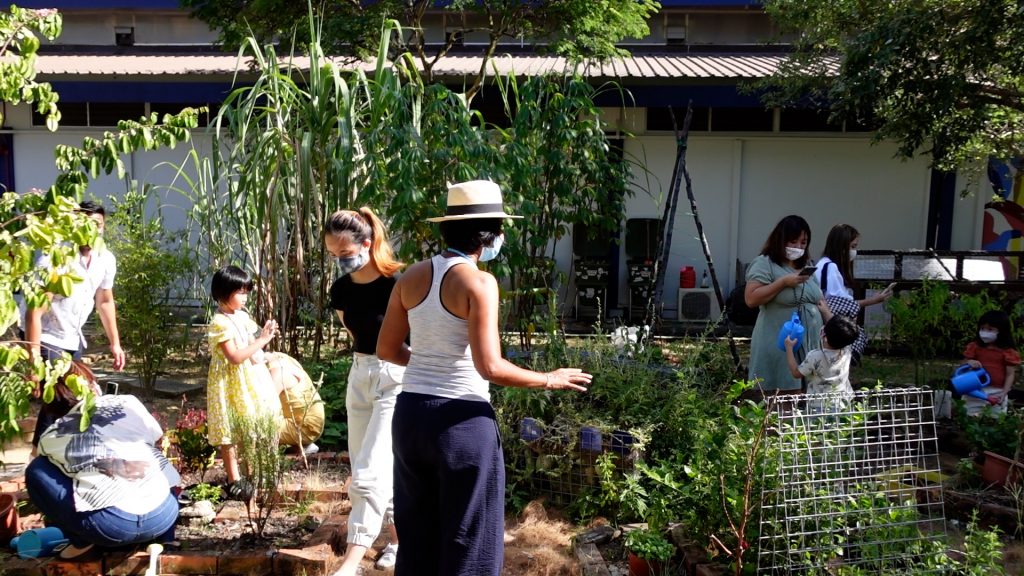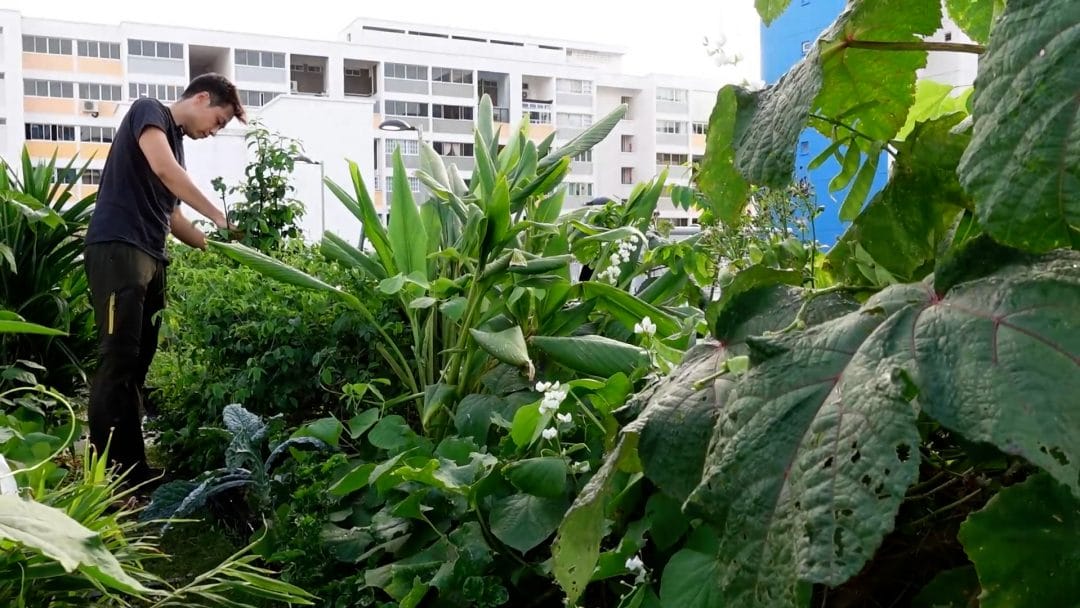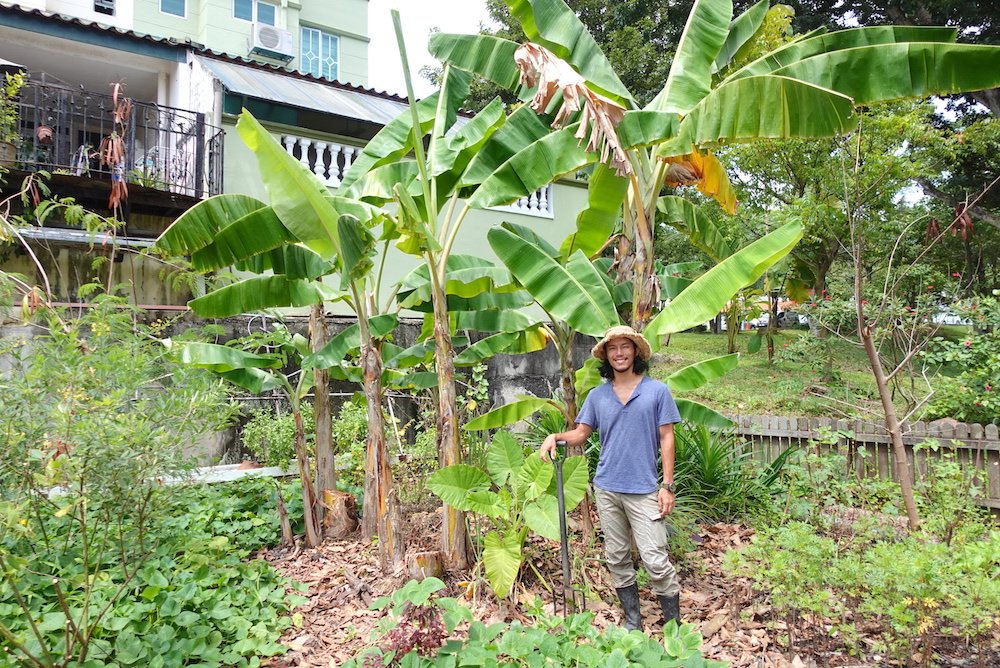Known as Woodlands Botanical Garden, this award-winning community garden is situated on a hillside in Marsiling spanning 2500m2 over 9 storeys. Furnished with more than 200 varieties of plants, this is a wonderland for birds, bees, butterflies and other garden inhabitants. The good news is it is open round the clock to the public for visits.
Officially launched in July 2020, this showstopping garden is tended to by Woodlands Botanical Garden Chairman Ganesh, his father and a team of around 20 residents. Together they plant, prune, build garden structures and undertake general garden tasks, including feeding the budgerigars who have their own enclosure on the premises.
Even though this garden was established not long ago, it has already won three awards, including Garden of Year 2022. Flowers that can be found here include roses, Melastoma, Tecoma, Plumbago, Crossandra, Chalicevine, Musical Notes plant and a wide variety of Hibiscus.
Thanks to the diversity of plants and the community garden’s approach to stewarding the garden, visitors are treated to day-long sightings of bees, butterflies, birds, dragonflies and other pollinators. The pond has helped attract more wildlife to the garden, in addition, Ganesh believes in letting nature take its course, and does not intervene when caterpillars and snails make a meal of the plants.
Ganesh has built a few gardens throughout the years, beginning with his grandfather’s garden, a community garden in Hougang, followed by a garden in one of NTU’s halls, where he was the residential mentor. With this garden, he hopes that it can serve as a mental wellness garden for others to enjoy.
Read on to find out more about Ganesh and Woodlands Botanical Garden.
